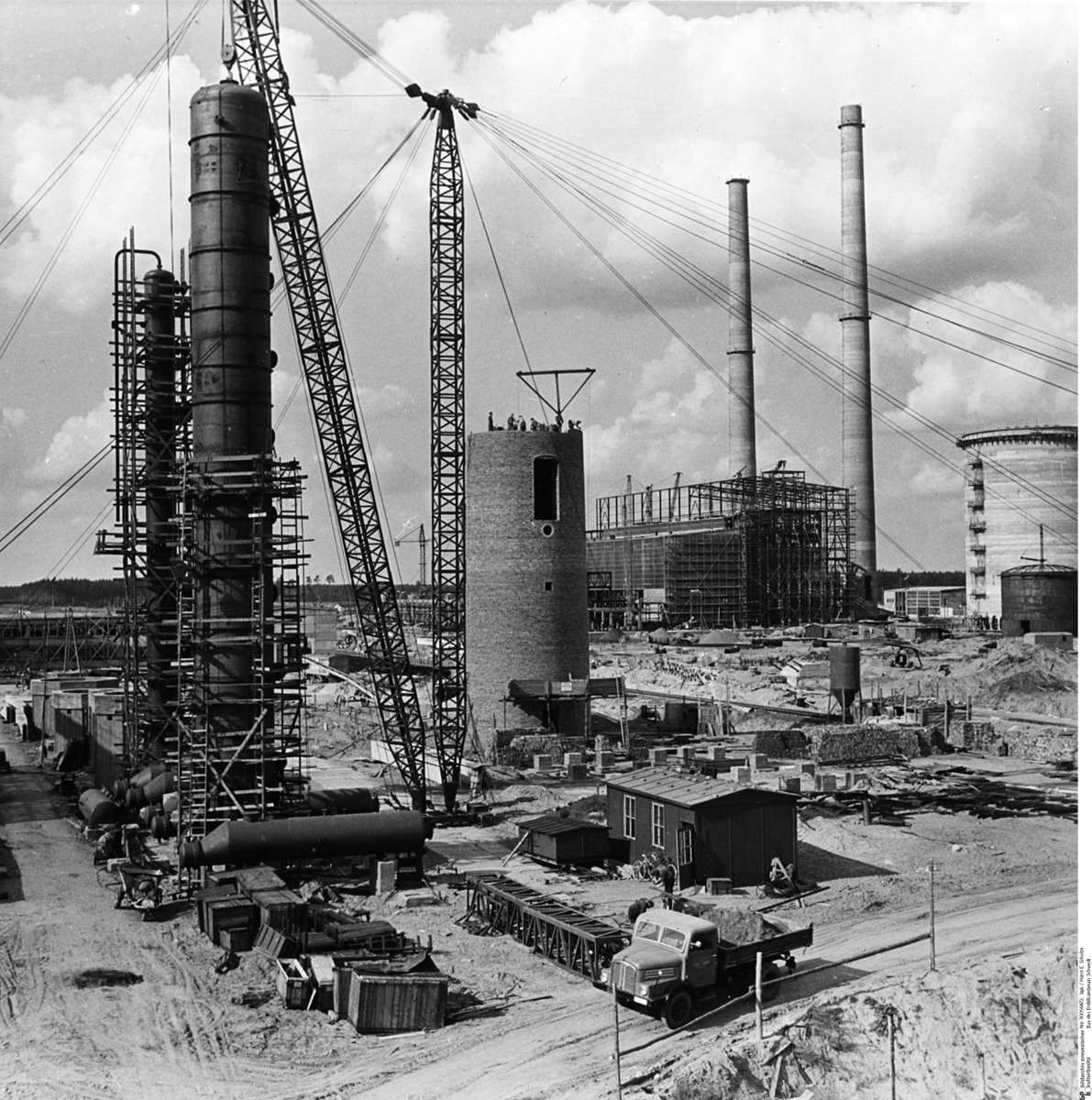Abstract
A treaty signed in Moscow on December 18, 1959 resulted in the
construction of a crude oil pipeline from the Soviet Union, through
Poland, to Schwedt on the Oder River in the GDR. On November 11, 1960,
the cornerstone was laid for a crude oil combine
[Kombinat] in Schwedt. The 5,000-km
long “Friendship” pipeline was dedicated on December 18, 1963, and the
nationally-owned petroleum processing plant in Schwedt
[Volkseigener Betrieb or VEB] became
operational on April 1, 1964. In 1970, it was transformed into the
Schwedt Petrochemical Combine (PCK). The PCK played a central role in
the GDR’s energy economy: approximately four-fifths of oil imports from
the Soviet Union flowed through the “Friendship” pipeline toward
Schwedt. Moreover, the Schwedt combine accounted for three-fourths of
the GDR’s total oil refining capacity. Refining petroleum products was
the main source of valuta in the planned economy.
